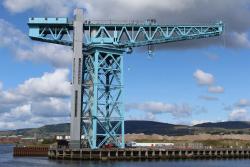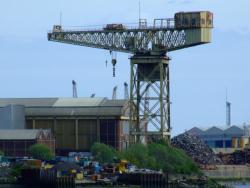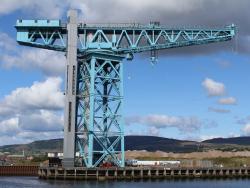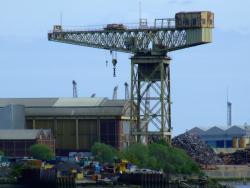The Titan is a 200-ton electrically driven hammerhead cantilever crane, the earliest survivor of this type. It is now all that remains of the once great John Brown Shipyard in Clydebank near Glasgow where many of the world's great ships were built. Designed and constructed by Sir William Arrol and Co. Ltd., Glasgow, Scotland, in 1907 the Titan set the standard for many more similar cranes to be erected worldwide. It has been restored and opened as a tourist attraction in 2007.
Scotland


The largest crane of the hammer-head or Titan' type, and the earliest s

Traversing the Great Glen of the Scottish Highlands for 60 miles the Caledonian Canal connects the North Sea by Beauly and Moray Firth on the east coast with the Irish Sea by Lochs Linnhe and Eil on the west. Thirty eight miles of the canal pass through freshwater lochs Douchfour, Ness, Oich and Lochy with the remaining 22 miles formed by earth cutting. Initially 28 locks, and later 29, were required to reach the summit elevation of 106 feet at Loch Oich.
Innovations

Traversing the Great Glen of the Scottish Highlands for 60 miles the Caledonian Canal connects the North Sea by Beauly and Moray Firth on the east coast with the Irish Sea by Lochs Linnhe and Eil on the west. Thirty eight miles of the canal pass through freshwater lochs Douchfour, Ness, Oich…
Read More
The Titan is a 200-ton electrically driven hammerhead cantilever crane, the earliest survivor of this type. It is now all that remains of the once great John Brown Shipyard in Clydebank near Glasgow where many of the world's great ships were built. Designed and constructed by Sir William Arrol…
Read More


